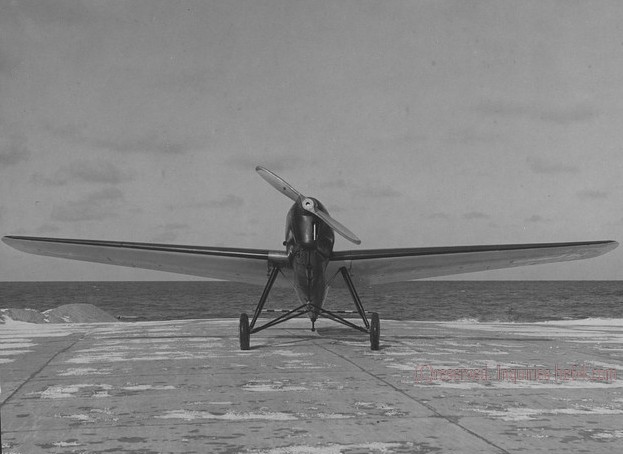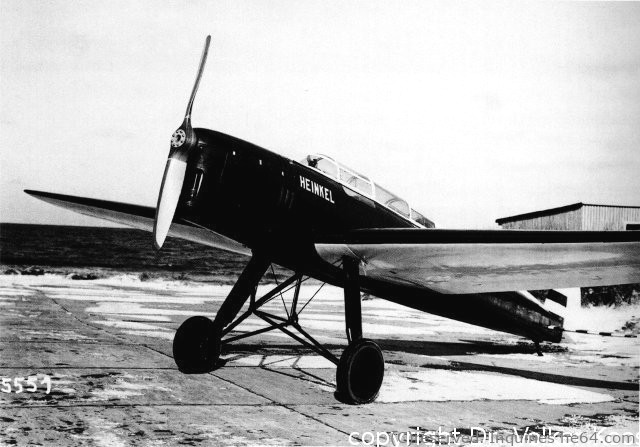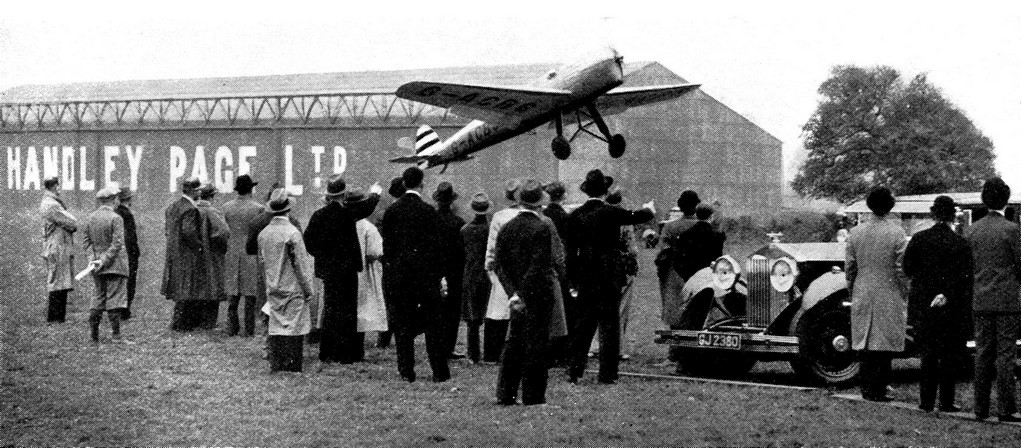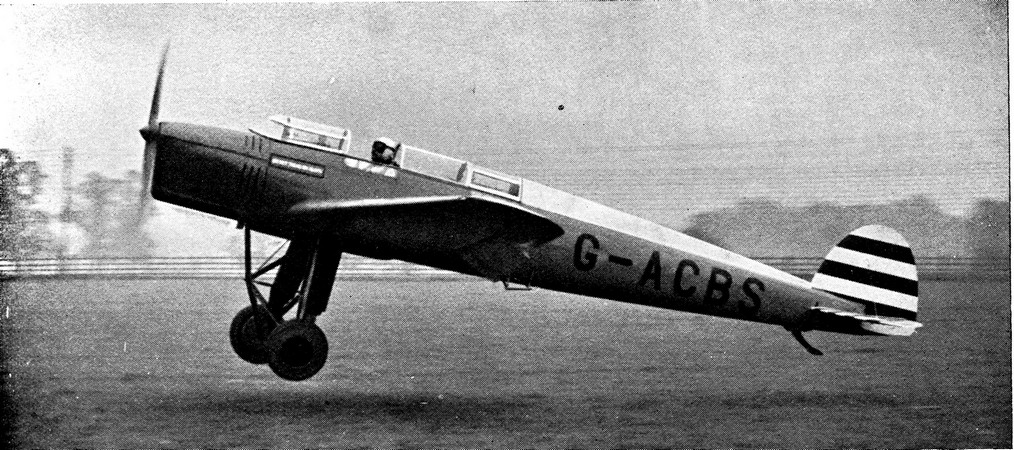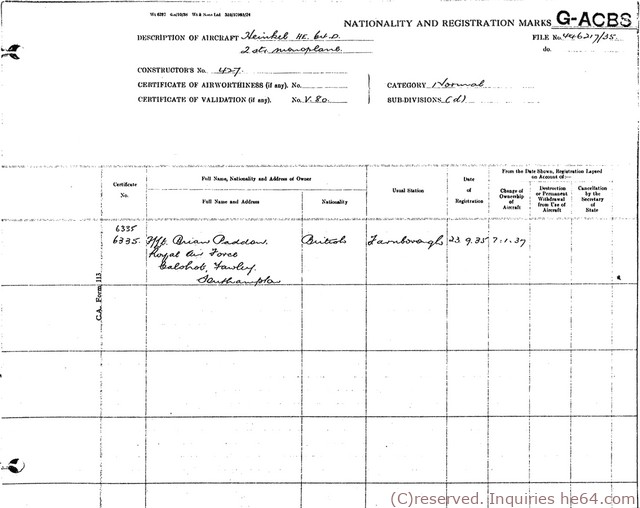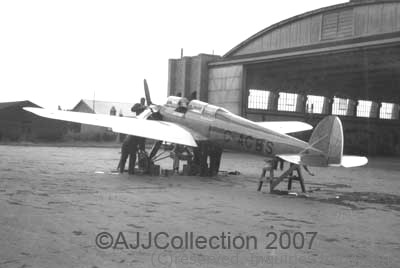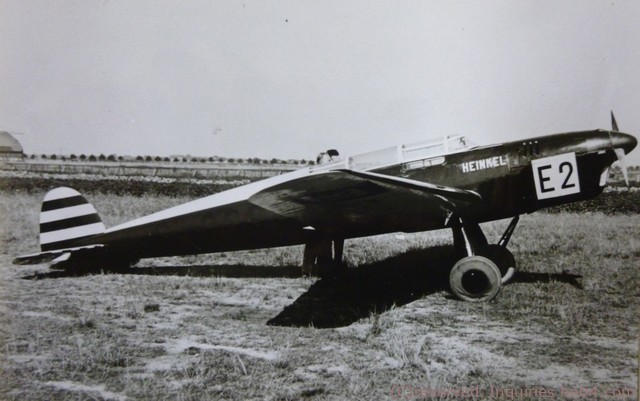
| Date | Registration | Owner | Comments |
|---|---|---|---|
| Aug 32 | D-2305 | He GmbH, Warnemünde | Participation European Tourist plane contest, pilot Junck/mechanic Beese |
| Apr 33 | G-ACBS | Handley-Page | Flight tests at Handley Page, name-giver of the high lift devices |
| K3596 | Royal Aircraft Establishment | Flight tests, reconstruction of the landing gear, detailed evaluation of performance data | |
| 1935 | VP-YBI | C.H. Perrem, Umtali, Rhodesia | Private aircraft |
| Feb 50 | VP-YBI | Neville 'Bowks' Bowker, Umtali, Rhodesien | Private aircraft, reconaissance for grounds to grow tobacco |
| 1951 | VP-YBI | Louis Malloch | Private aircraft |
| 1952 | Laid up after landing crash |
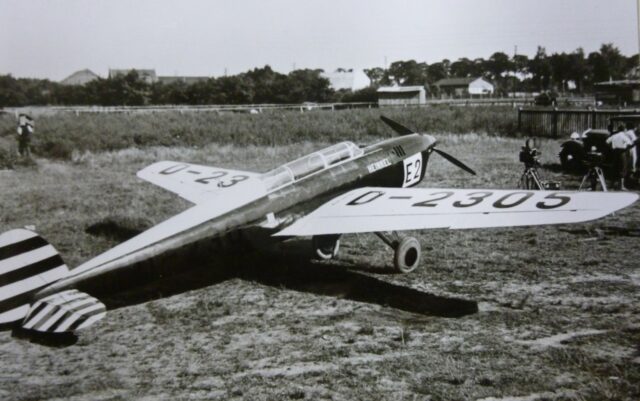
In the tourist plane contest
In the 1932 tourist plane contest, Werner Junck and his ‘mechanic’ Beese scored 14. on the D-2305. Thereafter, the aircraft was retrofitted with a DH Gipsy III-engine
Sold to England
and in december 1932 sold to england, where it initially was flight-tested as G-ACBS by Handley-Page.
Between April and October 1934 it was examined by the Royal Aircraft Establishment, registered as K3596. The results have been published 1935 as a 10-page-study ‘full scale tests of slots & flaps Heinkel He.64’ by the scientist Herbert Brian Squire (1909-1961). On September 23rd 1935 it was re-registered G-ACBS by the Royal airforce. Somewhen between 1935 and 1937 the aircraft was painted in the blue colour it had until its end.
Leaving Europe
1937 the aircraft was sold into private hands and left Europe towards Rhodesia: C.H. Perrem, a businessman from Rhodesia aquired the aircraft which was ferried to Umtali by his friend, Mr. Elton, a farmer in the vicinity of Umtali. Mr. Elton wrote an interesting contemporary report about his flight to Rhodesia. There, it got the registration VP-YBI. Its new owner modified the aircraft further: He removed the closed cockpit and replaced it with a windscreen:
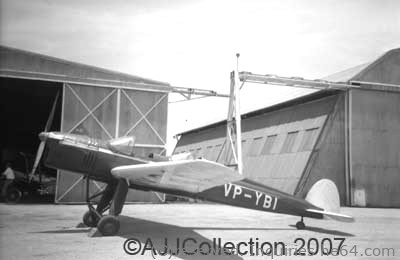
“I have fitted ample sliding cockpit windscreens to the kite which enables it to be used as either a fully open cockpit machine or by pulling the large windscreens back on the rails when the edges come behind the shoulders it becomes to all intents and purposes a closed machine without the vibrational drumming one gets in a small cabin, and ventilation is good.”
Letter H. Perrem to “The Aeroplane spotter”, 11th February 1948
Mr. Perrem visited England together with his wife in 1938 flying the Heinkel.
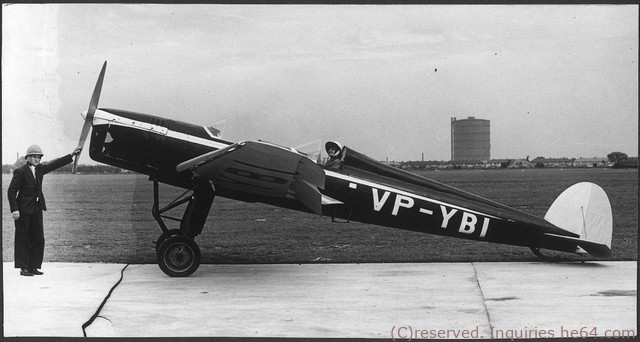
During worldwar II, the aircraft was laid up in Rhodesia.
1945, Mr. Perrem and his wife undertook a 6000 mile trip with it around Southern Rhodesia, South West Africa (now Namibia) and South Africa. According to Mr. Perrem, obviously the first private aircraft in southern africa after the war.
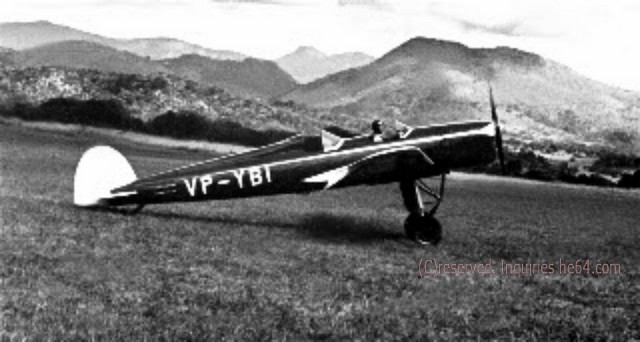
Mr. Perrem wrote, that the Heinkel always was a dependable companion, which did not only serve well on his touristic flights, but also at his business appointments.
He mentioned especially the excellent slow-flying capabilities which enabled him to take-off and land ad the smallest airfields safely.
The Bowkers acquire the Heinkel
Mr. Perrem sold his Heinkel in february 1950 to Neville ‘Bowks’ Bowker, who used her to explore grounds for a new farm in Northern Rhodesia to grow Tobacco. Especially his wife, Colleen, loved the aircraft:
“In my mind she was unique and I loved her and it caused a big problem between us when he sold her to a Mr. Louis Malloch, in 1951, who promptly crashed her.”
Exchange with the author
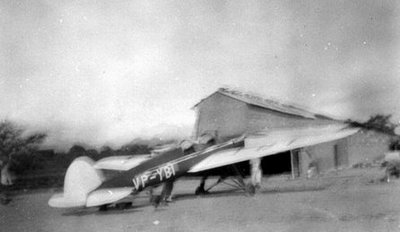
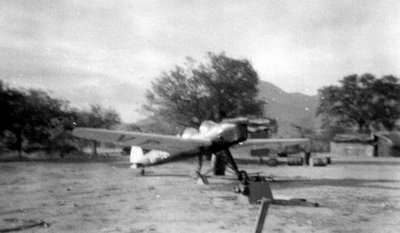
“I regarded her as a plane built for women because she was different, light and fast, and safe, and elegant (I had renamed her Lili Marlene because of her long legs) but unfortunately I never got the opportunity to take her on as mine as I was too busy with a very young family, and packing and moving to even think of obtaining my licence.”
Exchange with the author
1951 she was sold to Mr. Louis Malloch, who unfortunately crashed her during landing soon after.
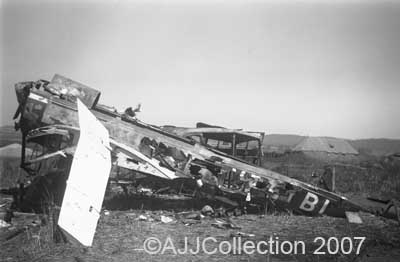
All in all, framenumber 427 flew more than 1000 hours. 1952 met the fate of most wooden aircraft of the 30’s: it was abandoned at Belvedere Airport, Salisbury (now Harare) and soon became derelict. According to a witness, the picture was instead taken aside of Perrems landing strip in Umtali.
